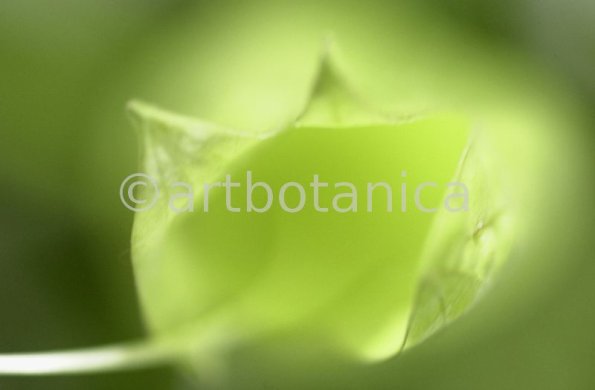
Der Gemeine Stechapfel ist eine einjährige Pflanze, die bis zu 1,20 m hoch wird. Aus spindelförmiger, ästiger, weißer Wurzel erhebt sich der aufrechte, gabelspaltige und sparrig-ästige Stengel. Er ist stielrund, glatt und kahl. Nur die inneren Seiten der Äste und Blattstiele sind flaumig. Die Blätter sind gestielt, eiförmig und ungleich-buchtiggezähnt. Die sehr kurz gestielten Blüten sind gabel- und endständig und stehen einzeln. Der Kelch ist fünfkantig und fünfzähnig. Die große weiße, selten violette Krone ist trichterig und hat einen fünffaltigen, gezähnten Saum. Der eirunde Fruchtknoten ist mit kurzen, fleischigen Borsten dicht besetzt. Die große, eiförmige, gestielte Kapsel trägt spitze Dornen und enthält zahlreiche linsenförmige schwarzbraune Samen. Datura wirkt bei Asthma,
Keuchhusten,
Nervosität und
Neuralgien. Datura ist stark giftig. Jimsonjade is an erect annual herb, on average 30 to 150 cm tall with erect, forking and purple stems. The leaves are large, 7 to 20 cm long and have irregular teeth similar to those of oak leaves. The flowers are one of the most distinctive characteristics of Datura stramonium: they are trumpet-shaped, white to purple, and 2-7 in. long. The fruit are walnut-sized, egg-shaped, and covered in prickles, they split into four chambers, each chamber with dozens of small black seeds. All parts of the plant emit a foul odor when crushed or bruised. It was used as a mystical sacrament in both possible places of origin. Aboriginal Americans in the United States have used this plant in sacred ceremonies. All Datura plants contain tropane alkaloids such as scopolamine, hyoscyamine, and atropine, primarily in their seeds and flowers. Because of the presence of these substances, Datura has been used for centuries in some cultures as a poison and hallucinogen.
